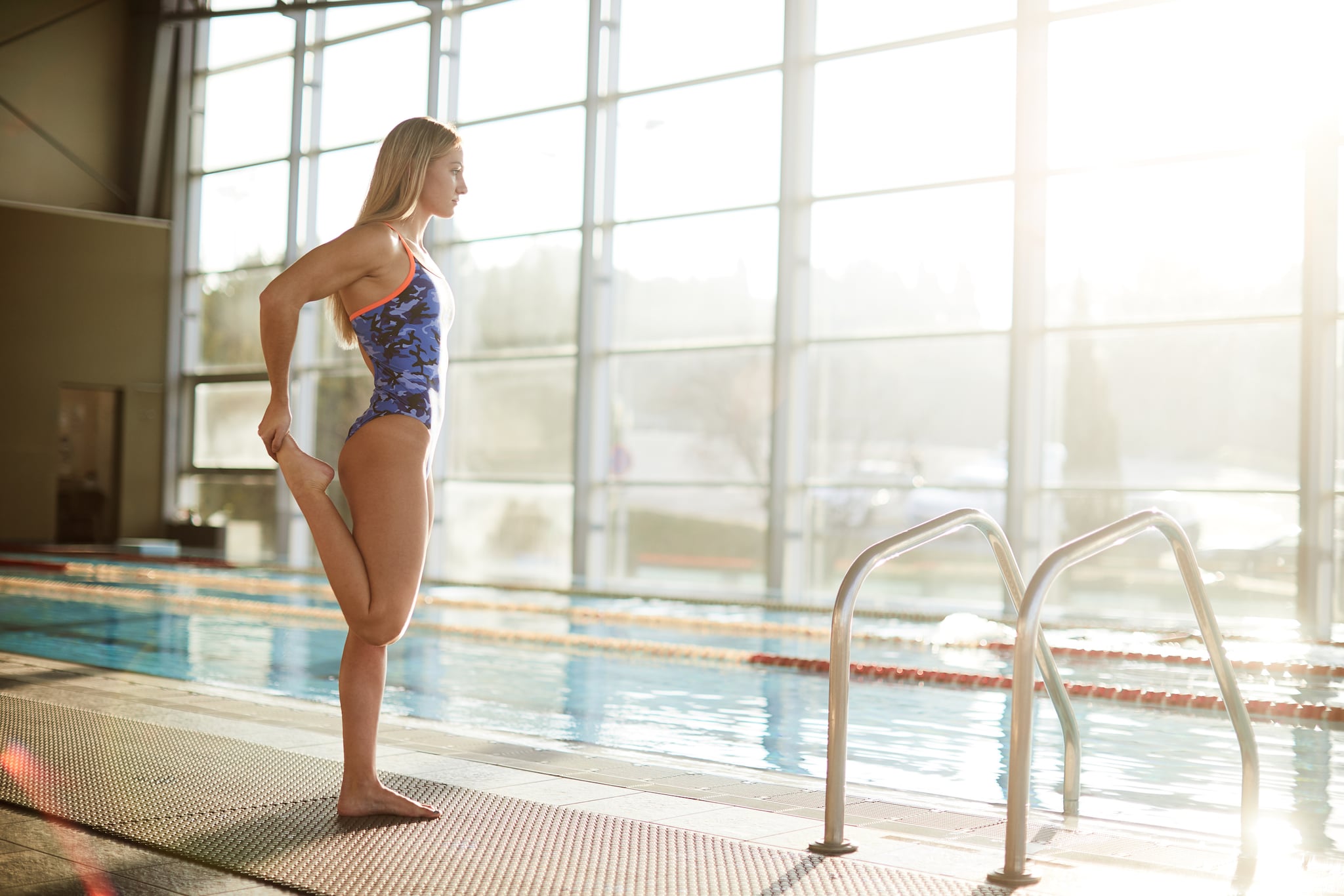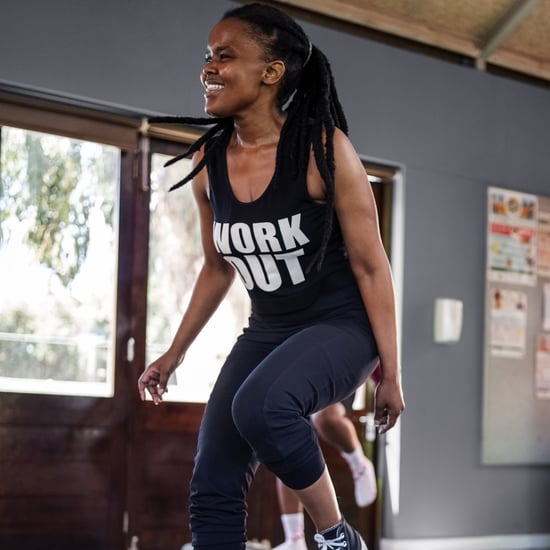How to Stretch for a Swimming Workout
Your Guide to Stretching Before and After Swim Workouts

If you're a beginner diving into swimming, you might have noticed curated workouts usually contain a warmup and cooldown set. While these exercises help rev up and relax your body after a tough training session, they don't replace pre- and post-swim stretching on dry land.
To find out what types of stretches you should be focusing on before the low-impact cardio workout, we reached out to Dan Daly, C.S.C.S, an Equinox EQX H20 instructor, Tier X trainer, and Masters swimmer.
Swimming and Your Body
A full-body workout, swimming is unique in that it works the upper and lower body, offers muscular-strengthening benefits due to resistance in the water, and also conditions the cardiovascular system, Daly explains.
The muscles you're working the most is really dictated by the stroke you're performing, whether that's butterfly, backstroke, breaststroke, or freestyle. "The most common and efficient stroke, freestyle, is an upper body-dominant exercise, primarily working the shoulders and lats, as well as the core and legs, with other strokes emphasising more core and legs," Daly says.
Stretching Before Swimming
Swimming might work the whole body, but that doesn't mean you have to set aside 15 minutes to stretch every body part before jumping into the pool. In fact, Daly says that prolonged stretching before exercise has been shown to fatigue the muscles and reduce strength.
"It's better to first assess and identify any joints and their surrounding muscles lacking their anatomical full range of motion," Daly notes. That means you should be creating a stretching routine specific to you. These stretches should address restoring those ranges and the positions you'll need to hold while swimming.
For example, Daly says shoulder mobility is critical for swimming, so rotation drills and thoracic extension before swimming can help enhance your stroke. "Exercises, like cobras, cat/cows, and the world's greatest stretch, cover a lot of the big rocks," Daly notes.
Overall, he recommends dynamic stretches for 5-8 repetitions each "that favour active movement through full ranges of motion over static holds." These help to warm up the body, increase heart rate and breathing, and prime the nervous system.
Stretching After Swimming
Finished your last lap? After you hop out of the pool and peel off your cap, give yourself some time to stretch once again.
Daly says this will help encourage blood flow to flush waste from muscles and restore resting length, aiding in your recovery.
"Reassess your range of motion again, and/or focus on muscles that feel tight and fatigued," he says. "Typically, the lats, and depending on strokes swum — glutes, quads, hamstrings, and calves."
He also mentioned that swimmers may find limited range of motion in their lats or thoracic spines from the repetitive stress of swimming. "Opening these up dynamically pre-workout, with longer 1- to 2-minute static holds post workout, will help."
Again, Daly stresses that your post-stretch routine should be specific to your individual body's needs. This could help reduce the risk of repetitive strain injuries, as well as maximise your training time.
Need a swim set to get started? Check out this beginner's guide, or curated apps with a variety of workouts like MySwimPro.







